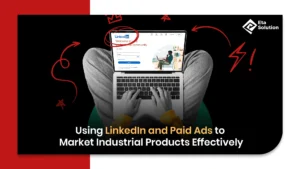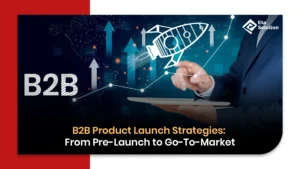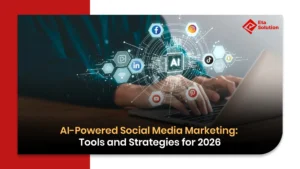
How to do SEO for E-Commerce Website
What is E-commerce SEO
Are you an e-commerce business owner striving hard to increase the sales of your product? In this case, E-commerce SEO is all you need. It is the key to ranking your business at the top of your long list of peers. When you use your E-commerce store properly, your potential audience can find your shop or products with ease. As a result of this, your bottom line will be boosted in the end.
There is a stark difference between the general SEO and the E-commerce SEO. The main goal of Ecommerce SEO is to meet the unique needs of online stores, where product listings, categories, and customer-focused pages require specialized strategies.
Why it Matters
SEO for your E-commerce is unavoidable for diverse reasons. A study shows that many browsers are more likely to choose the option that the first page of the search engine suggests. Do you want to know the exact numbers? It is 99%. Only one percent goes beyond the first page of the search engine. This statistic shows the importance of E-commerce SEO.
There are many key areas of focus in E-commerce SEO like keyword research (finding the terms shoppers use to search for products), product page optimization (crafting detailed and engaging product descriptions), technical SEO (ensuring fast loading times and mobile-friendliness), and link building (increasing site authority through quality backlinks). By investing in these areas, businesses unlock greater visibility, attract more organic traffic, and watch their sales soar.
E-commerce SEO Hacks That Can Drive Real Results
Keyword Research for E-commerce SEO
As an E-commerce business owner, your first priority should be in-depth keyword research. Even the best products with great quality will go unnoticed without the right keywords.
Keep these 2 goals in mind before your every keyword research:
1.Pick your niche’s most similar keywords.
2.Put yourself in your audience’s shoes and know the purpose of their search.
By targeting relevant, high-intent keywords, you significantly increase the chances of your products appearing in search results. This delivers a spike in website traffic and a whopping rise in sales.
Types of Keywords to Target
Product Keywords
These are the keywords that are particular to each product or category, like “leather jackets” or “wireless earbuds.” These keywords aim to capture customers who know what they want. So, every E-commerce page should make them essential for every product page. To find out the effective product keywords, use tools like Google Keyword Planner or Ahrefs to assess search volume and competition.
Long-Tail Keywords
Back in the days, many businesses used long-tail keywords such as “best leather jackets for winter” or “noise-canceling wireless earbuds for gym.” Despite the fact that they have lower search volumes, these keywords capture niche audiences with a higher buying intent. This reduces competition and pulls the potential customers who are closer to making a purchase like a magnet.
Transactional Keywords
Transactional keywords, such as “buy leather jacket online” or “discount wireless earbuds,” indicate high buying intent. These keywords appeal directly to customers who are ready to purchase. This is what makes them ideal for product and category pages. Including transactional keywords can significantly increase conversion rates.
How to Find Keywords
Finding the right keywords is no longer a walk in the park. There are thousands of relevant keywords and hundreds of tools available. How will you choose the ideal one for you? You can make use of tools like Google Keyword Planner, Ahrefs, and SEMrush for finding the right keywords. These tools show search volume, keyword difficulty, and related terms, helping you identify which keywords to target.
Bonus tip: For effective E-commerce SEO, incorporate these keywords in product titles, descriptions, and meta tags.
Product Page Optimization
Your product pages are the heart of your e-commerce website. Optimizing them not only improves user experience but also boosts search engine rankings. Here are a few best practices for it:
Optimizing Product Titles and Descriptions
Product titles should be descriptive and include primary keywords. If you are an E-commerce entrepreneur, you can aim for keyword-rich descriptions that are unique and informative, not generic titles that are outdated before ages. This approach not only improves rankings but also assists the customers in comprehending your product’s benefits a step better.
High-Quality Images and Alt Tags
You can’t ignore high-resolution images if you want to create a positive user experience. Remember, that each image should have descriptive alt tags with relevant keywords, like “brown leather jacket for men,”. The purpose of this is to improve image SEO. Alt tags assist search engines in understanding the content and boosting rankings.
Schema Markup for Product Pages
Schema markup is a well-structured data format that assists search engines display rich snippets like product reviews, prices, and availability directly on SERPs. Adding schema markup to your product pages increases visibility and can pave the way to higher click-through rates.
Customer Reviews and User-Generated Content
User-generated content like reviews can improve credibility and impact search rankings. Search engines favor pages with user engagement, making reviews a powerful addition to your product pages.
Technical SEO for E-commerce Websites
Technical SEO focuses on backend elements that impact site performance and usability. It’s crucial to ensure that search engines can efficiently crawl and index your website.
Site Structure and Navigation
A well-organized site structure improves user experience and helps search engines understand the hierarchy of your pages. Use category and subcategory pages to organize products logically, making it easier for customers to find what they’re looking for.
Improving Site Speed
Fast-loading pages are essential, especially for mobile users. Slow websites can lead to high bounce rates, costing sales. Tools like Google PageSpeed Insights can help identify areas to optimize, such as image compression and caching.
Mobile Optimization
With Google’s mobile-first indexing, having a mobile-optimized site is critical. Ensure that your e-commerce site has a responsive design that works seamlessly on all devices, especially for product and category pages.
Handling Duplicate Content
Duplicate content is a common issue in e-commerce, especially with product variations. Use canonical tags and consistent URL structures to prevent duplicate content issues that can negatively impact SEO.
Content Marketing for E-commerce SEO
Beyond product pages, content marketing can drive organic traffic and build authority.
Blogging for E-commerce
Blogs offer a way to connect with customers and improve SEO. You can create posts around topics like “how-to” guides, seasonal trends, and product tips, which attract traffic and boost your site’s relevance.
Product Comparisons and Buying Guides
Comparison guides and buying guides are valuable resources that help customers make informed decisions. These guides often target informational keywords that capture search interest at an earlier stage in the buying process.
Video Content and How-To Tutorials
Video content keeps users engaged longer and can boost page rankings. Platforms like YouTube are ideal for sharing tutorials or product demos. Embedding videos on product pages can improve user experience and encourage conversions.
Link-Building Strategies for E-commerce Websites
Link-building improves domain authority and SEO rankings by acquiring quality backlinks from reputable sites.
Internal Linking
Internal linking helps search engines understand the structure of your site. Link related products and blog posts to improve navigation and guide users to relevant content.
Backlink Strategies
Collaborate with influencers and bloggers for product reviews and industry publications for guest posts. Social media can also help generate backlinks, enhancing both traffic and authority.
Local SEO for E-commerce Businesses with Physical Stores
If you have a physical store, local SEO can increase your visibility in local search results.
Optimizing Google My Business Profile
Setting up and optimizing your Google My Business profile ensures your store appears in local searches, which can drive foot traffic.
Using Local Keywords
Incorporate location-specific keywords on your website to attract local customers.
Tracking & Measuring E-commerce SEO Performance
Tracking your SEO efforts helps you understand what’s working and where improvements are needed.
Setting Up Google Analytics and Search Console
These tools help monitor organic traffic, user behavior, and keyword rankings, giving you insights into your SEO performance.
Monitoring Key Metrics
Track key metrics like conversion rate, bounce rate, and session duration to evaluate your site’s effectiveness. Regular SEO audits identify issues and uncover growth opportunities.
The Ending Note
“Modern Problems Require Modern Solutions”
The current E-commerce landscape is no less than a stormy sea. You need hands-on expertise to sail through it. That’s where we get into the picture. With years of experience in As Best SEO Company in Ahmedabad, we can take your E-commerce business from the ‘unseen’ to ‘new’ heights. Contact Eta Solution to scale your business in the way you want.
SEO for e-commerce involves optimizing your online store to rank higher in search engines, which helps attract more organic traffic, increase visibility, and boost sales without relying solely on paid ads.
Focus on long-tail keywords with commercial intent. Use tools like Google Keyword Planner, Ahrefs, or Ubersuggest to find keywords with good search volume and low competition that match your product offerings.
Important on-page elements include optimized product titles, meta descriptions, image alt tags, SEO-friendly URLs, unique product descriptions, and internal linking to related products or categories.
Use optimized images, enable caching, implement a content delivery network (CDN), minimize JavaScript/CSS files, and choose a fast, mobile-friendly theme or platform.
Yes, they do. User-generated content like reviews increases keyword variety, improves trust signals, and can enhance click-through rates, all of which contribute to better search engine rankings.

What started as a passion for marketing years ago turned into a purposeful journey of helping businesses communicate in a way that truly connects. I’m Heta Dave, the Founder & CEO of Eta Marketing Solution! With a sharp focus on strategy and human-first marketing, I closely work with brands to help them stand out of the crowd and create something that lasts, not just in visibility, but in impact!

Industrial Product Marketing with LinkedIn & Paid Ads

Top Digital Marketing Strategies for Industrial Products in 2026

B2B Product Launch Strategies: From Pre-Launch to Go-To-Market

